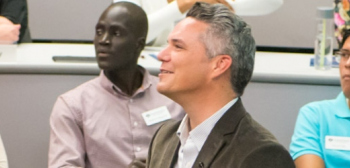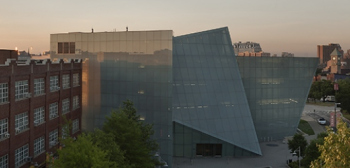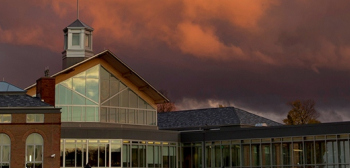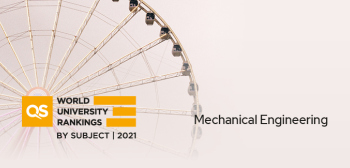- #1 QS Global World Ranking
- Private not for ProfitStatus
- Very HighResearch Output
- 11,720Total Students
- 3,134Faculty
- 3,824Int'l Students
The University’s position in the current QS World University Rankings.
Whether the University is funded by the government of that country or state, or funded by private donations.
The research intensity of the University, based on the number of papers output relative to the University’s size.
The number of full time equivalent students enrolled at the University.
The number of full time equivalent teaching staff employed by the University.
The number of full time equivalent international students enrolled at the University.
Massachusetts Institute of Technology (MIT)
About
Applying to study at college is a huge life decision, and the thoroughness of the MIT application process reflects this. Candidates apply through an online application system known as MyMIT. The application fee is US$75 and initially candidates submit biographical details. They then answer short response questions and essays before listing and writing about four activities of particular significance to them and submitting information about coursework and grades.
Additional requirements include letters of recommendation from two teachers (one math/science, one humanities), plus extra materials from a school counselor (typically including a transcript, a school profile and letter of recommendation).
Applicants also complete standardized tests: native English speakers must submit SAT/ACT scores as well as undertake two SAT subject tests, in mathematics and science. Non-native English speakers are encouraged to take the TOEFL and two SAT subject tests.
The final part of the process is the interview, which will usually be conducted locally by alumni or over Skype. Overall the process is highly competitive, with candidates who reach the interview stage typically having a 10.8 percent chance of being admitted.
Fees and tuition for 2017–18 cost US$67,430 per academic year, which includes housing and dining, books, and personal expenses. Financial aid is available and is claimed by 91 percent of undergraduate students. The school stresses that 72 percent of its undergraduate students currently graduate debt free.
Candidates apply to MIT as a whole, not to a specific major or school. First year students begin with an undeclared major then during their freshman year, attend academic fairs, lectures, seminars, and other programs to determine their major.
There is a dizzying array of bachelor's degree and minor programs on offer, from nuclear science to political science, with all manner of arts, languages, and humanities subjects in between. There are also interdisciplinary majors, such as American Studies, as well as joint majors such as Chemistry and Biology, or Humanities and Engineering.
However, life as an undergraduate at MIT isn’t all about studying: there is a flourishing center for the arts, over 500 student organizations, and thriving athletics and sports culture as well as a culture of elaborate practical jokes, known as “hacks”.
Much of the fun on campus is also centered around MIT's residential life system, where different cultures thrive in different residence halls and living groups. About 90 percent of undergraduate students live in residence halls and fraternities, sororities, and independent living groups.
About
Applying to study at college is a huge life decision, and the thoroughness of the MIT application process reflects this. Candidates apply through an online application system known as MyMIT. The application fee is US$75 and initially candidates submit biographical details. They then answer short response questions and essays before listing and writing about four activities of particular significance to them and submitting information about coursework and grades.
Additional requirements include letters of recommendation from two teachers (one math/science, one humanities), plus extra materials from a school counselor (typically including a transcript, a school profile and letter of recommendation).
Applicants also complete standardized tests: native English speakers must submit SAT/ACT scores as well as undertake two SAT subject tests, in mathematics and science. Non-native English speakers are encouraged to take the TOEFL and two SAT subject tests.
The final part of the process is the interview, which will usually be conducted locally by alumni or over Skype. Overall the process is highly competitive, with candidates who reach the interview stage typically having a 10.8 percent chance of being admitted.
Fees and tuition for 2017–18 cost US$67,430 per academic year, which includes housing and dining, books, and personal expenses. Financial aid is available and is claimed by 91 percent of undergraduate students. The school stresses that 72 percent of its undergraduate students currently graduate debt free.
Candidates apply to MIT as a whole, not to a specific major or school. First year students begin with an undeclared major then during their freshman year, attend academic fairs, lectures, seminars, and other programs to determine their major.
There is a dizzying array of bachelor's degree and minor programs on offer, from nuclear science to political science, with all manner of arts, languages, and humanities subjects in between. There are also interdisciplinary majors, such as American Studies, as well as joint majors such as Chemistry and Biology, or Humanities and Engineering.
However, life as an undergraduate at MIT isn’t all about studying: there is a flourishing center for the arts, over 500 student organizations, and thriving athletics and sports culture as well as a culture of elaborate practical jokes, known as “hacks”.
Much of the fun on campus is also centered around MIT's residential life system, where different cultures thrive in different residence halls and living groups. About 90 percent of undergraduate students live in residence halls and fraternities, sororities, and independent living groups.
University highlights
- 2012#1
- 2014#1
- 2015#1
- 2016#1
- 2017#1
- 2018#1
- 2019#1
- 2020#1
- 2021#1
- 2022#1
- 2023#1
- 2024#1
- 2025#1
- 2026#1
Campus locations
Massachusetts Institute of Technology (MIT),
77 Massachusetts Avenue , Cambridge , Massachusetts , United States , 02139
Similar Universities
Temple University
1801 North Broad Street, Philadelphia
651-700 QS World University Rankings 5 QS starsRochester Institute of Technology (RIT)
Lomb Memorial Drive, Rochester
ASU - Thunderbird School of Global Management
400 E Van Buren, Phoenix
University of Texas Arlington
701 S. Nedderman Drive, Arlington
Seton Hall University
400 S Orange Ave, South Orange, South Orange
Maryland Institute College of Art
1300 W. Mount Royal Avenue, Baltimore
Related content
Test preparations
Featured University


-
10 UG & 47 PGTotal courses
-
Private for ProfitStatus
-
HighResearch output




















